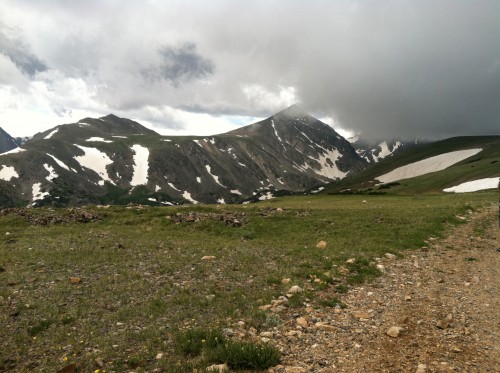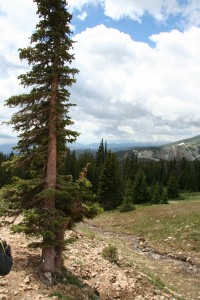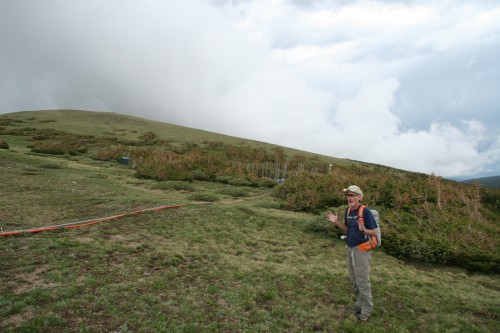 Earlier this week, I had the privilege of spending a few days at a place that nurtured my interest in science. The Mountain Research Station was where I conducted my first independent research project (funded by an REU grant from the NSF). As I’ve written previously, my experience studying the evolution of an alpine plant’s reproductive strategy was hugely influential. It taught me how science is done and introduced me to the highs and lows of the scientist’s pursuit. Most importantly, it gave me an opportunity to take a project from conception to completion. My advisor, Pam Diggle, gave me a chance to present my research at a scientific meeting and publish the results in a well-respected journal.
Earlier this week, I had the privilege of spending a few days at a place that nurtured my interest in science. The Mountain Research Station was where I conducted my first independent research project (funded by an REU grant from the NSF). As I’ve written previously, my experience studying the evolution of an alpine plant’s reproductive strategy was hugely influential. It taught me how science is done and introduced me to the highs and lows of the scientist’s pursuit. Most importantly, it gave me an opportunity to take a project from conception to completion. My advisor, Pam Diggle, gave me a chance to present my research at a scientific meeting and publish the results in a well-respected journal.
They say you can’t go home again, and it’s true that the place feels different. The station itself has hardly changed. Sure, there’s a new classroom and lodge, but the Megaron still has a dance floor and a pingpong table, and, except for the computer lab, the Marr Lab remains much like it was when I worked there in the early 1990’s. It’s the landscape that’s shifted.
 Pine beetles are killing the forest around the lab, and warming temperatures are giving the beetles extra opportunities to spread. Climate change is expected to warm the Rocky Mountains by 2 to 5°C over the next 50 years, and an experiment investigating what this warming will mean for the alpine and treeline ecosystems suggests that drier soils and accelerated snowmelt could reduce the success of spruce and pine seedlings.
Pine beetles are killing the forest around the lab, and warming temperatures are giving the beetles extra opportunities to spread. Climate change is expected to warm the Rocky Mountains by 2 to 5°C over the next 50 years, and an experiment investigating what this warming will mean for the alpine and treeline ecosystems suggests that drier soils and accelerated snowmelt could reduce the success of spruce and pine seedlings.
Scientists at the Mountain Research Station have been monitoring CO2 concentrations at Niwot Ridge since 1968 (the site boasts the world’s third longest record of CO2 concentrations). Since the project began, the seasonal amplitude of CO2 has waned. Likewise, spring now comes earlier and autumn ends later than it did a few decades ago.
 Still, not everything has changed. On the day we hiked up to Niwot Ridge, a thunderstorm rolled in, and we found ourselves surrounded by a surreal fog. As we rushed down the ridge to escape potential lightening strikes, we were pelted with rain and then hail. Just like old times. I returned to the station soaked, but smiling. It was nice to be back.
Still, not everything has changed. On the day we hiked up to Niwot Ridge, a thunderstorm rolled in, and we found ourselves surrounded by a surreal fog. As we rushed down the ridge to escape potential lightening strikes, we were pelted with rain and then hail. Just like old times. I returned to the station soaked, but smiling. It was nice to be back.
*
Images by Christie Aschwanden (from top: view from Niwot Ridge, tree where metal tabs mark snow level each year, and Herr Perfesser Doktor Krumholtz discussing the tundra warming experiment.)